J-STORIES - Since J-Stories was launched in April 2022 as Japan's first solution-specific media, it has been transmitting innovative ideas and products from Japan to the world. In this interview, Toshi Maeda, founder and executive editor of J-Stories, talks about how he got into journalism, his time as a journalist, and how he left journalism to develop an app as an entrepreneur. In the first of a three-part series, we asked Maeda about his student days when he first encountered the world of journalism.
.jpg)
Q: Today, I would like to ask you about your life story and how you quit your career as a journalist working in the international media, decided to start a business, and then returned to journalism, which you had once given up, to launch J-Stories. Please do tell us about your life story.
Maeda: Yes. I’m looking forward to it.
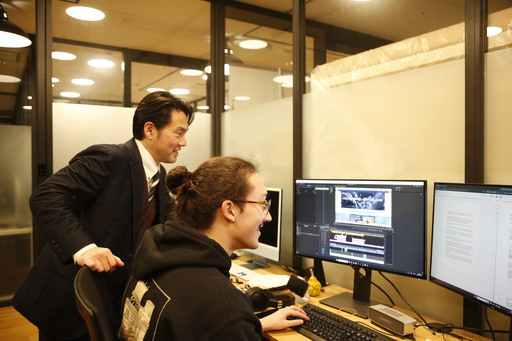
Watching CNN in high school with no English speaking skills whatsoever
Q: First of all, please tell us about the time before you became a journalist. What kind of student were you and why did you decide to become a journalist?
Maeda: I was born in the Tama district of Tokyo, in the so-called "countryside of Tokyo" (laughs), and until the age of 18 I attended a local public school, living a life that had nothing to do with anything overseas.
Q: Is that so? Since you speak fluent English, I thought you had lived abroad for a long time since you were young...
Maeda: At that time, I did not speak English at all. I had never heard or spoken English properly. However, I was interested in journalism, and since elementary school I had been the editor-in-chief of a wall newspaper and the chairman of the broadcasting committee. During my senior year of high school, I knew I really wanted to become a journalist after watching the reporters on CNN. I thought to myself, "I want a job where I can travel around the world and tell stories on TV! I want to interview people all over the world like Larry King!
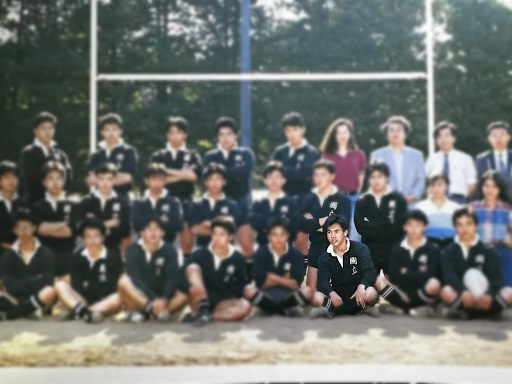
Q: But you could not speak English at all?
Maeda: Not at all (laughs). I decided to go to an American university to learn English first, but my family was not well-off and my parents were very much against the idea.
Q: It is difficult for an ordinary family to study abroad at their own expense. But you didn't give up, did you?
Maeda: No, I didn't. For a year after graduating from high school and entering a Japanese university, I continued to search for a school where I could somehow study abroad, making full use of scholarships and exchange programs, without giving up. As a result, I was able to enroll in a small university in Tennessee, USA, as an exchange student at the age of 19.
When Maeda became “Carlos” during his study in the U.S.
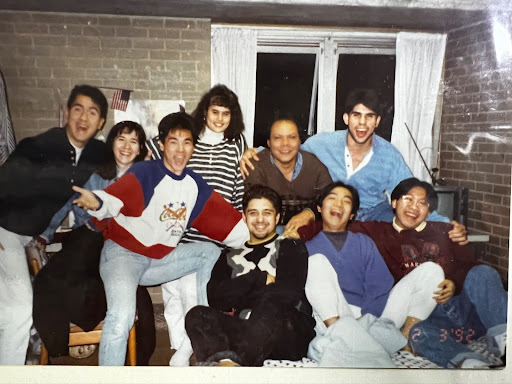
Q: I see. So you learned English in the U.S., the place you had longed to study abroad?
Maeda: Yes, but it wasn’t so easy. I thought that American life was waiting for me, but most of my roommates and friends in the dormitory were Latin American people who had come to the United States to learn English. So daily conversations with them could not be conducted in English, but in Spanish. Therefore, I had to learn Spanish before English (laughs).
Q: So you’re telling me that the first thing you learned when you studied abroad was Spanish?
Maeda: Yes, I studied Spanish in University and learned the language. I became known as "Carlos" by the local Japanese, and although I thought I was going to be immersed in American culture, I became steeped in the culture and groove of Latin America instead. Of course I studied English and absorbed a lot of the American culture, but I think it was the Latin American culture that influenced me the most at the time. I wanted to know more about their culture, so in the summer when I was 20 years old, I set out on a journey that took me from Tennessee, where I was studying abroad, southward in a clunker of a car to every Latin American country I could find.
Q: Wow. Not content with just getting to know each other, did you actually go to South America?
Maeda: Yes (laughs). 1993 was a time when there was still no Internet or cell phones. I attached a "one-dollar compass," which I bought at an American one-dollar store, the equivalent of a 100-yen store in Japan, to the car ceiling and just kept going South. In the countries along the way, I visited the homes of local friends I had met in the U.S. and was sometimes invited to stay overnight.
.jpg)
Q: Going south with a compass is unthinkable now that we have cell phones and GPS. How far did you go with that?
Maeda: It took about three months to travel 16,000 km overland through 13 countries in Central and South America to reach Buenos Aires, the capital of Argentina. This means that I traversed the entire South American continent, from the U.S. to Central America and beyond.
Q: Traversing South America! That is an amazing experience.
Maeda: What I experienced on the trip has been a great experience for me in every sense, and now that I think about it, it seems to have been the starting point of my journalism.
Travel to Latin America awakens journalism mission
Q: The origin of journalism? What do you mean?
Maeda: There were many things I saw and felt on that trip, but the things that really stood out to me were child poverty, police corruption, and the friendliness and kindness of the local people, all of which I had never experienced in Japan or the United States before and could not have learned from books or television. After witnessing and experiencing these things, I strongly felt that I had a duty to tell the world what I had learned, and that I wanted to do such a job.
Q: So, your study abroad experience and your exposure to Latin American culture was a major catalyst for you to become a journalist?
Maeda: Of course, I was greatly influenced by what I learned in the U.S., but I think the turning point for me was learning firsthand about Latin American society and ways of looking at things, which are not often reported in Japan.
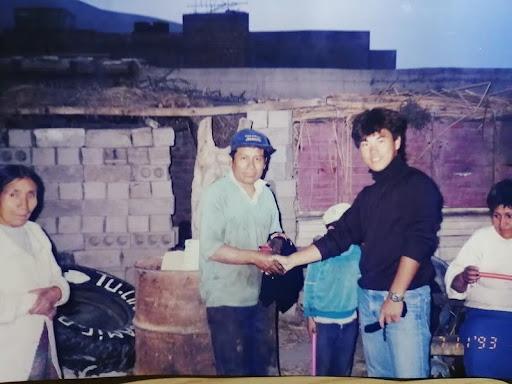
How did you learn English?
Q: By the way, this is a bit off topic, but how did Maeda, the editor-in-chief, who could not speak English at all, study abroad and then improve to a level where he could write articles in English? Please tell us how you studied at that time.
Maeda: When I was 17 years old, I happened to be reading a book about the subconscious written in the U.S., and subconsciously, I kept imagining myself speaking English as if it were my native language.
Q: Subconscious! It's important to imagine yourself being able to do it. But that's not enough to improve, is it? There must have been some effective way to study, right?
Maeda: I didn't even know anyone who spoke English until I was in high school, so I tried to listen to English on TV, radio, or commercially available cassette tapes as much as possible, and read books aloud.
Q: Read aloud! I guess it’s important to read the text at loud.
Maeda: When I graduated from university and started writing articles in English, I really had to learn as I went along. I was even struggling to write articles without making any factual mistakes. In the beginning, I was corrected a lot by the editorial desk and native English-speaking copy editors (proofreaders). By checking how they corrected my articles and comparing the "before" and "after" each time, I gradually learned the style and expressions used in news articles.
Q: I see. When you were a rookie reporter, you also went through a lot of trial and error, didn't you, Mr. Maeda?
Maeda: When I was at Reuters, I also made TV news reports (so-called "complete packages") in English. so I would always listen back to the narration that I had dubbed and broadcasted on air, and if I felt that my pronunciation was unclear, I would consciously practice that part later to improve my pronunciation.
Q: It's really a steady effort of checking the audio of yourself speaking and practicing repeatedly. I was expecting you to have a magical study method (laughs).
Maeda: Looking back, it was a very gratifying experience because I was able to learn how to pronounce English words and write English articles while doing the news work I love. Nevertheless, as a professional responsible for delivering news to readers and viewers overseas, I always paid close attention to English grammar, vocabulary selection, and pronunciation, in addition to checking the facts, as a matter of course. Because I set high standards for myself, I actively studied English phonetics in the United States. So I am actually quite confident in teaching English pronunciation to non-native English speakers just like myself (laughs).
Q: So you are able to teach because of your own hardships?
Maeda: Yes. News articles have a pattern, so you don't have to be a native English speaker to be able to write them if you put in the effort. The reason for this is that English news articles are characterized by simplifying difficult things, and simple, easy-to-understand expressions are often preferred. If I had been asked to write English literature or novels that require difficult vocabulary and expressions, I would have given up (laughs).
Differences between Japanese and foreign journalism
.jpg)
Q: So after returning to Japan, you became a reporter for the English-language Japanese newspaper, The Japan Times?
Maeda: After working in the Tokyo bureau of an overseas news organization and a news production company, I became a reporter at The Japan Times. I became a political correspondent and covered such events as the birth of Prime Minister Junichiro Koizumi. In this period, I was able to learn how not only society but also the "Japanese media industry" operates by working with political reporters from Japanese news organizations and making "night and morning runs" to politicians' homes.
Q: As a member of the foreign media, what was your impression of the Japanese media industry?
Maeda: For better or worse, I felt there were differences between the foreign media and the Japanese media. For example, when the Liberal Democratic Party or a government official makes an announcement of some kind, the Japanese media uses the "words" and "expressions" that are conveyed in the announcement and writes about it as it is, which is considered a good way of reporting. On the other hand, when the same announcement is conveyed by foreign media, it is not acceptable to translate the announcement directly into Japanese. If you do so, you will be treated as an example of bad journalism. When you receive an announcement, you must first grasp the overall picture, including the social background, and then put it into your own words to find out what it means to the readers, and write it in your own interpreted "language”. This is normal in the English-language media, and if I don't do this, I have not done my job as a reporter.
Q: I see. So even though you were in Japan and covering the same thing, reporters from foreign media were not doing exactly the same thing as those from Japanese media?
Maeda: After all, there is the cultural issue of what is acceptable, and there is also the situation that when simply converting a language to convey a message, a direct translation is not the best way to communicate the exact details, so we have to take the meaning and rewrite it.
In order to write about Japan in a way that is easy to understand for foreign readers, I had to assume that they knew almost nothing about Japan, and I had to communicate in a way that was as straightforward and interesting as possible, taking into account background explanations.
Q: I see.It is true that most foreign readers are not familiar with Japanese culture or the complicated political system in Japan, and they may not be able to understand a single Japanese article with a direct translation unless you explain the historical background as a prerequisite.
Maeda: Another style of English article writing is the "inverted pyramid," in which the most important elements are summarized in the first paragraph. After that, a "Nut Graph" (a paragraph that summarizes in a few words why the reader should read the article) that explains how the news will affect the reader and society and what kind of impact it will have is placed as far up as possible, around the third paragraph. So you can get a general overview of any article just by reading the top three paragraphs or so. I have always tried to write articles in a concise manner.
Q: Editor-in-Chief Maeda grew steadily as a reporter in this way, but left the company in his sixth year. Why was this?
Maeda: To put it in a cool way, I had gained a certain amount of experience as a reporter in Japan, so I got greedy and wanted to try my skills at the "major leagues" of English-language journalism next.
Q: Major League Baseball?
ー Maeda, who started his career as an English-language journalist in high school when he could not even speak English, has now become an English-language journalist after studying abroad, which he had longed for. In the second part of the interview, he will talk about his challenges as an international journalist in the U.S. and the turning point he reached while working as a reporter!
(End of Part 1, to be continued in Part 2)
Translation and editing by Chika Osaka
Top page photo by Emi Takahata
Click here for the Japanese version of the article
For inquires about this article, please contact us at jstories@pacificbridge.jp
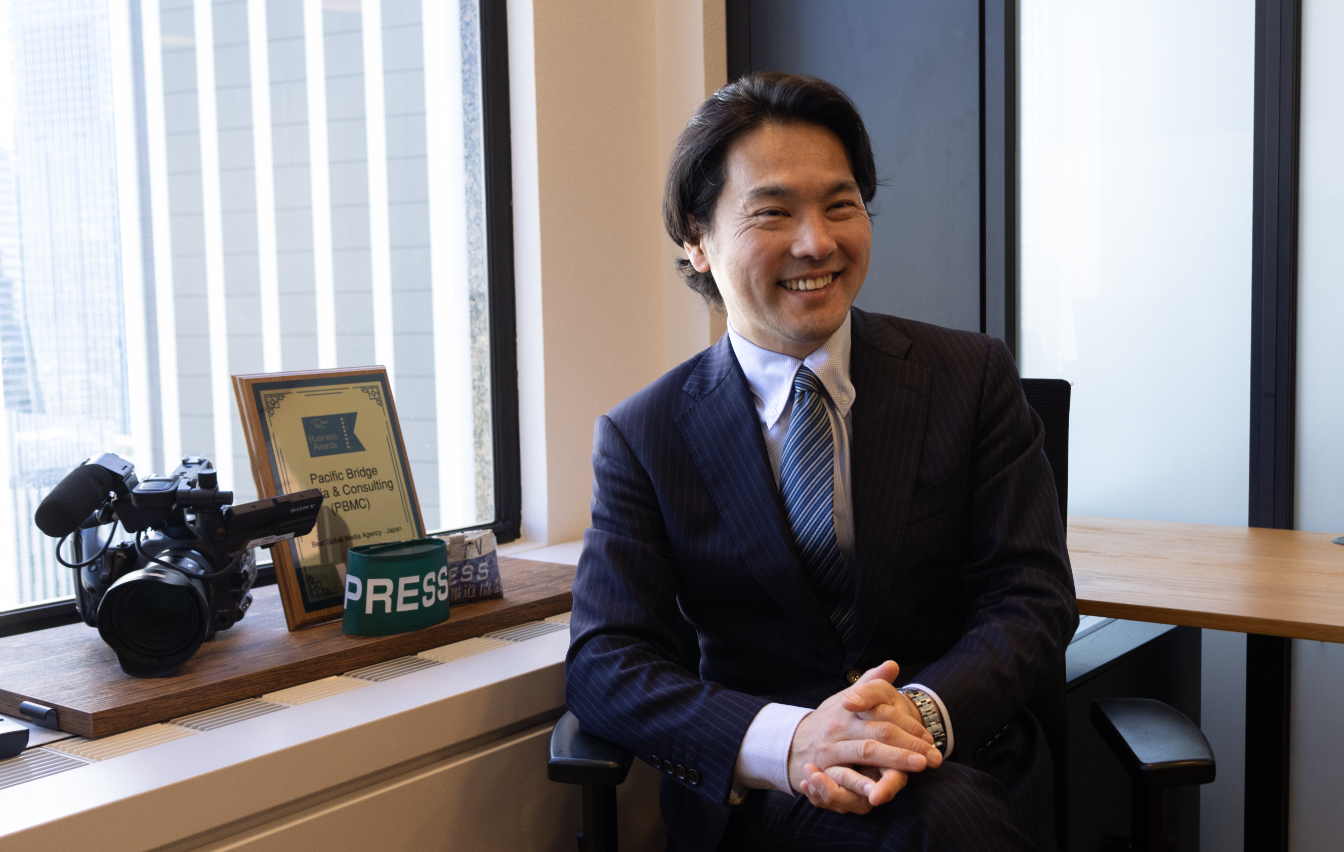
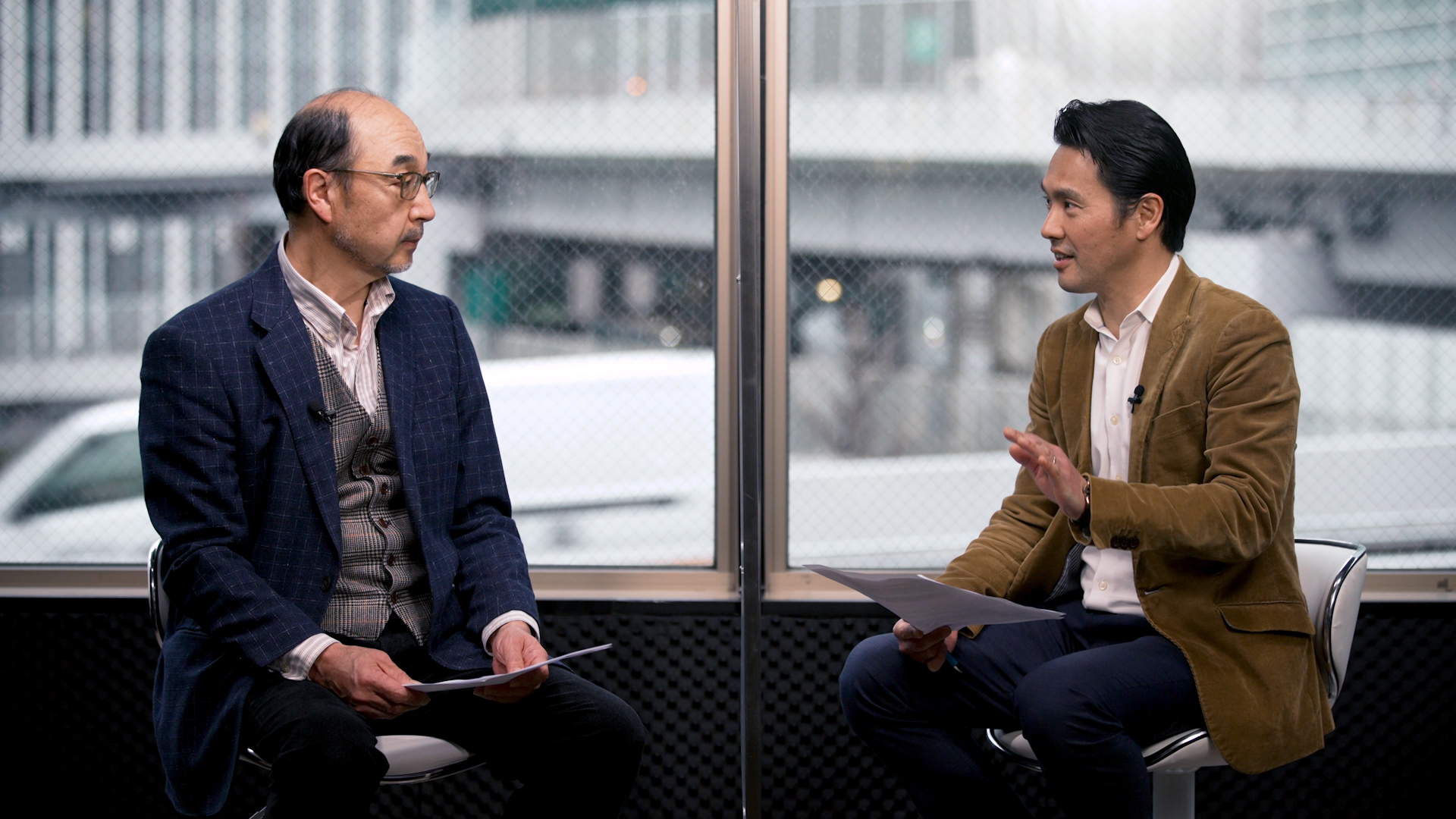
![[Discussion] Japan’s first solutions-focused news outlet seeks to help connect those in need](https://storage.googleapis.com/jstories-cms.appspot.com/images/1693454881837_O9A4461_smallthumbnail.JPG)
![[Interview] Longtime startup watcher predicts more 'unicorns' in Japan](https://storage.googleapis.com/jstories-cms.appspot.com/images/1691573339231%E3%82%B9%E3%82%AF%E3%83%AA%E3%83%BC%E3%83%B3%E3%82%B7%E3%83%A7%E3%83%83%E3%83%88%202023-08-09%2018.25.29_smallthumbnail.png)
![[Podcast] Japanese technology to supercharge human fertility (Part 1)](https://storage.googleapis.com/jstories-cms.appspot.com/images/1765440905082unnamed_smallthumbnail.jpg)

![[Podcast] Japanese technology to supercharge human fertility (Part 3)](https://storage.googleapis.com/jstories-cms.appspot.com/images/1766558713084place-for-scientific-research-2025-03-07-14-08-49-utc%20(1)_bigthumbnail.jpeg)
![[Interview: Part 2] A digital approach to tackle child hunger in Japan with dignity](https://storage.googleapis.com/jstories-cms.appspot.com/images/1766130666509unnamed_bigthumbnail.jpg)
![[Podcast] Japanese technology to supercharge human fertility (Part 2)](https://storage.googleapis.com/jstories-cms.appspot.com/images/1765863548035unnamed-7_bigthumbnail.jpg)
![[Podcast] Japanese technology to supercharge human fertility (Part 1)](https://storage.googleapis.com/jstories-cms.appspot.com/images/1765440905082unnamed_bigthumbnail.jpg)
_bigthumbnail.jpeg)




![[Interview] When digital and physical worlds meet](https://storage.googleapis.com/jstories-cms.appspot.com/images/1747974430456unnamed-2_smallthumbnail.png)

![[Interview] How Japanese musician Grover turned his passion of ‘sound’ into a health-tech startup](https://storage.googleapis.com/jstories-cms.appspot.com/images/1746181078493R7__1407_smallthumbnail.jpg)


_smallthumbnail.jpeg)

![[Interview: Part 1] From nourishing souls to feeding the hungry](https://storage.googleapis.com/jstories-cms.appspot.com/images/1763695595492unnamed_smallthumbnail.jpg)

